Open Journal of Trauma
Grade V Renal Injury – Short and Long Term Outcome
Rajendra B Nerli1*, Vikas Sharma1, Basavaraj M Kajagar2, Neeraj S Dixit1 and Nitin D Pingale1
2Department of Surgery, Jawaharlal Nehru Medical College, Nehru Nagar, Belgaum - 590 010, Karnataka, India
Cite this as
Rajendra BN, Sharma V, Basavaraj MK, Neeraj SD, Nitin DP (2017) Grade V Renal Injury – Short and Long Term Outcome. Open J Trauma 1(1): 020-025. DOI: 10.17352/ojt.000005Introduction: Over the last few decades, non- operative management (NOM) has become increasingly popular, especially for low-grade (I-III) blunt renal injuries. The published evidence is unclear about the role of NOM for higher grades (IV and V). We took up this study to report our short and long-term outcomes following initial nonoperative management in patients sustaining a grade 5 renal injury secondary to blunt trauma.
Materials and Methods: The charts of all patients who presented to our institution with blunt renal trauma between Jan 2000 and Dec 2014 and had grade V renal injury were identified and analyzed.
Results: 114 patients were identified, with grade V renal injury following blunt trauma (BRI). 9/114 patients (7.89%) died following resuscitation in the casualty and emergency services, 4 (3.50%) of whom had deaths that were related to the kidney injury. 36 (34.28%) underwent early surgical exploration (13 – 42 hours) for various indications and nephrectomy was performed in 21 (58.33%). Eight patients who were on non-operative management needed delayed surgical exploration of which two patients (25%) presenting with massive secondary bleeding needed nephrectomy for control of the bleeding.
Conclusions: 41.9% of patients with grade V renal injury needed surgical exploration of which 34.28% underwent early, whereas 7.61% underwent delayed exploration. 58.33% of patients undergoing early exploration and 25% of patients undergoing delayed exploration ended up with nephrectomy. Non operative management would be safe in the majority of patients with grade V renal injuries secondary to blunt trauma.
Introduction
The kidneys are one of the most commonly injured organs secondary to external trauma. The last 2 decades have witnessed a great evolution in the evaluation and management of renal injuries which occur in up to 10% of abdominal trauma cases [1]. Today nonoperative management strategies for renal preservation have become all the more successful due to several advances in radiographic staging, improvements in hemodynamic monitoring, validated renal injury scoring systems, and essential details about the mechanisms of injury [1]. The majority of blunt and many penetrating injuries to the kidneys no longer require absolute surgical intervention despite association with other visceral injuries. The presence of concomitant injuries often influences the management of renal trauma; approximately 80% to 90% of renal injuries have major associated organ injury requiring surgical exploration.
The majority of grade I to III renal injuries can be managed nonoperatively with excellent renal preservation. However patients with grade V injuries, who are hemodynamically unstable at presentation due to major renovascular insults or multiple grade IV parenchymal lacerations, may require immediate life-saving operative intervention. Baverstock et al. [2], reviewed all admissions of patients with renal injury during the period Jan 1992 to December 1998. Renal injuries were noticed in 227 patients (1.4%), of which 18.3% were grade III, IV and V injuries. Management was conservative in 87.5% of grade III and 77.7% of grade IV, whereas 90.9% of grade V injuries needed operative intervention. Nephrectomy rates were 12.5% (grade III), 16.6% (grade IV) and 90.9% (grade V). Similarly Kuan et al. [3], retrospectively reviewed the association between increasing American Association for Surgery of Trauma (AAST) scores and nephrectomy, dialysis and mortality in a total of 742,774 patients registered in the National trauma data bank (NTDB). Renal injury occurred in 8465 (1.2%) patients. Increasing injury grade was associated with a greater nephrectomy, dialysis and mortality rate for blunt renal injury. For penetrating injury, nephrectomy was the only outcome that was associated with higher grades of renal injury. We report our short and long-term outcomes following initial nonoperative management in patients sustaining a grade V renal injury secondary to blunt trauma.
Methods
The charts of all adult patients who presented to the authors institution with blunt renal trauma between Jan 2000 and Dec 2014 were identified. Only those presenting with a grade 5 renal injury (shattered kidney or major vascular injury) for whom urology services were necessary were included in this study. Trauma was graded according to the renal injury scale developed by the Organ Injury Scaling Committee of the American Association for Surgery of Trauma [3]. Grading was based on a contrast enhanced (1.5–2 ml/kg) abdominal computed tomography (CT) scan performed at the time of presentation to the casualty and emergency services. A total of 114 patients were identified, who presented with grade 5 renal injury and constituted the subject matter of this study.
Initial treatment included intravenous fluids, broad-spectrum antibiotics, absolute bed rest, and close clinical observation with monitoring of vital signs and serial haematocrits. Patients were transfused whenever it was necessary to maintain hemodynamic stability or haematocrit was <20%. Patients with gross haematuria were kept on bed rest until the urine was grossly clear. Repeat clinical examinations and portable bedside abdominal ultrasounds were used to monitor the size of the hematoma/urinoma. CT scan was repeated in patients with persistent bleeding or an increasing hematoma/urinoma as detected clinically or by ultrasound at any time during the course of initial management. The findings on repeated CT scans were compared to the initial studies, and the data was used for planning of subsequent interventions. Surgical intervention/exploration was performed in patients with hemodynamic instability (refractory to blood transfusion), those with persistent bleeding (haematuria and/or increasing hematoma size) or suspected vascular injuries. Patients with progressively increasing urinoma were treated by percutaneous drainage (PCD) with or without ureteral stenting.
Data was collected with respect to the type of injury, symptoms at presentation, complications and their treatment, duration of hospital stay, initial radiologic evaluation, and radiologic evaluation prior to any intervention. At follow-up visits patients were evaluated by clinical examination, serial blood pressure measurements, urine analysis, serum creatinine, and CT scan. Dimercaptosuccinic acid (DMSA) scanning was reserved for those patients with salvaged kidneys. Hypertension was defined as a systolic and diastolic blood pressure above the 95th percentile for age, sex, and weight.
Results
In total, 114 patients were identified, with grade V renal injury following blunt trauma (BRI) who were managed at our center. The mean (SD) age of the patients was 28.80±9.26years (median age, 27 years, range 4 – 53), with 53 of the 114 patients (46.49%) younger than 25 years of age. Of the 114 patients 86 (75.43%) were males and the remaining 28 (24.56%) females. Road traffic accident remained the most common cause (90/114, 78.94%) of blunt renal injury. Other causes of BRI included fall from moving vehicle such as bicycle/motor cycle 17 (14.91%) and physical blow/push 7 (6.14%). Haematuria 103 (90.35%) was the most common presentation; other symptoms included pain in abdomen, inability to pass urine, pain in chest, distension of abdomen, breathlessness and loss of consciousness. Most patients were brought to the hospital within six hours of sustaining injury, mean 6.74±6.45 hours (range 1.5 – 28 hours).
Other major injuries besides the renal injury were found in 84 patients (73.68%), including splenic injuries (22 patients [19.29%]), liver injuries 17 patients [14.91%]), other abdominal injuries (Figure 1) (29 patients [25.43%]), skeletal injuries 16 [14.03%] and head injuries 11 [9.64%]. Overall, 9/114 patients (7.89%) died following resuscitation in the casualty and emergency services, 4 (3.50%) of whom had deaths that were related to the kidney injury. All these 4 patients had major renal vascular injuries along with multiple organ injuries and persistent hypotension not responding to transfusions. In the remaining 105 patients, CT scan imaging of the abdomen revealed a unilateral shattered kidney in 93 (88.57%), bilateral shattered kidneys 2 (1.90%), unilateral vascular injury (Figures 2,3) 9 (8.57%) and bilateral vascular injuries in 1 (0.95%) patient. Massive liver injuries were noted in 10 (9.52%), massively ruptured spleen in 8 (7.61%) patients. All the 105 patients who were resuscitated in the casualty and emergency services were managed conservatively. Of these 105 patients, 36 (34.28%) were later surgically explored (13 – 42 hours) for various indications (Table 1) (Figure 4,5). The decision for exploration was made by the treating Urologist/Trauma surgeon. Of the 18 patients explored for renal causes, 15 underwent nephrectomy for massive bleeding and shattered kidney. Of the other 18 cases explored for non-urological indications, 6 needed nephrectomy for control of bleeding. In the remaining 15 cases that did not undergo nephrectomy on exploration, it was possible to control bleeding, repair the shattered kidney and wherever necessary debridement of kidney or partial nephrectomy was done.
The 69 (65.71%) patients who were managed non-operatively were admitted to the intensive care unit (ICU) for further observation and management. Eight of these patients who were on non-operative management needed delayed surgical exploration for both renal/nonrenal indications (Table 2). Seven patients needed exploration for haematuria/increasing hematoma. Two of these had repair of the parenchyma, excision of dead tissue and nephrorrhaphy. One other patient with vascular injury had repair of renal vein. Two of the 4 patients presenting with massive secondary bleeding needed nephrectomy for control of the bleeding.
The 69 (65.71%) patients who were managed non-operatively were admitted to the intensive care unit (ICU) for further observation and management. Eight of these patients who were on non-operative management needed delayed surgical exploration for both renal/nonrenal indications (Table 2). Seven patients needed exploration for haematuria/increasing hematoma. Two of these had repair of the parenchyma, excision of dead tissue and nephrorrhaphy. One other patient with vascular injury had repair of renal vein. Two of the 4 patients presenting with massive secondary bleeding needed nephrectomy for control of the bleeding.
Discussion
The incidence of significant injuries (grades II to V) is around 5.4% of all renal trauma cases [4-6]. Computed tomography (CT) has been widely used in the evaluation of intra-abdominal and retroperitoneal injuries sustained during blunt abdominal trauma. Abdominal CT in the setting of acute trauma could provide essential anatomic and physiologic information required in determining further treatment. Haematuria and hypotension are the two important clinical signs associated with an increased risk of significant renal injury. Unfortunately, there is poor correlation between the severity of haematuria and severity of renal injury [7].
A general consensus exists among the urologic community that the urinary tract in any patient with blunt abdominal trauma should be imaged under the following circumstances: (a) presence of gross haematuria, (b) presence of microscopic haematuria associated with shock (defined as systolic blood pressure less than 90 mm Hg in the field or during resuscitation), and (c) microscopic haematuria associated with a positive result of diagnostic peritoneal lavage. Computed tomography (CT) is currently the gold standard diagnostic tool for the evaluation of blunt abdominal trauma, in a hemodynamically stable patient. It is used to accurately assess the severity of renal injury, determine the presence of urinary extravasation and perirenal haemorrhage, and determine the status of the renal vascular pedicle [7].
Regardless of mechanism of injury, nonoperative management (NOM) has become the standard of care in hemodynamically stable, well-staged patients with American Association for the Surgery of Trauma (AAST) grade I to III renal injuries [5]. Patients with grade IV and V injuries more than often require surgical exploration, but even some of these high-grade injuries can be managed without operation if carefully staged and selected [5,6]. This conservative approach has been due to historical evidence that the nephrectomy rate is higher among patients who undergo operative exploration (35%) than among those who simply undergo observation (12.6%) [8-11]. the published evidence is unclear about the role of NOM for higher grades (IV and V). In short, grade IV injuries indicate lacerations that extend to the renal pelvis, and grade V injuries indicate a shattered kidney or renal artery injuries with parenchymal devascularisation.
Van der Wilden et al. [12] reported on the rate, causes, predictors, and consequences of failure of nonoperative management in 206 adult patients with grade IV and grade V blunt renal injuries (BRIs). Of 206 patients, 52(25.2%) were operated on immediately, and 154(74.8%) were managed nonoperatively (with the assistance of angiographic embolization for 25 patients). Nonoperative management failed for 12 of the 154 patients (7.8%) and was related to kidney injury in 10 (6.5%). None of these 10 patients had complications because of the delay in BRI management. The mean (SD) time from admission to failure was 17.6 (27.4) hours (median time, 7.5 hours; range, 4.5-102 hours), and the cause was hemodynamic instability in 10 of the 12 patients (83.3%). Multivariate analysis identified 2 independent predictors of NOM failure: older than 55 years of age and a road traffic crash as the mechanism of injury. When both risk factors were present, NOM failure occurred for 27.3% of the patients; when both were absent, there were no NOM failures. Of the 142 patients successfully managed nonoperatively, 46 (32.4%) developed renal-related complications, including haematuria (24 patients), urinoma (15 patients), urinary tract infection (8 patients), renal failure (7 patients), and abscess (2 patients). These patients were managed successfully with no loss of renal units (i.e. - kidneys). The renal salvage rate was 76.2% for the entire population and 90.3% among patients selected for NOM.
Waleed Eassa et al. [13], assessed the feasibility and outcome of initial nonoperative management of grade 5 blunt renal trauma in 18 children (12 boys and 6 girls; mean age: 8.4 3.4 yr). Grade 5 renal trauma was demonstrated on intravenous contrast-enhanced computed tomography (CT) scan in all patients. Associated major vascular injuries were suspected in four patients. All were initially managed conservatively. Indications for intervention included hemodynamic instability, progressive urinoma, or persistent bleeding. Dimercaptosuccinic acid (DMSA) scans were performed at a mean time of 3.1 yr. (range: 1–17) following the injury in nine patients. Four patients (22%) with suspected major vascular injuries required nephrectomy 1-21 days following the trauma. Two patients with continuing haemorrhage required selective lower-pole arterial embolization (11%). Three patients (17%) had their progressive urinoma drained percutaneously, and two of them required delayed reparative surgery for ureteropelvic junction (UPJ) avulsion. Nine patients (50%) were successfully managed nonoperatively. Kidneys were salvaged in 78% of patients. DMSA scanning showed a split function >40% in 44% of evaluated kidneys. Two patients (22%) had split function <30%. At last follow-up, none of the children were hypertensive or had any abnormality on urine analysis.
Similarly Henderson et al. [14], reviewed their experience with renal trauma in 126 children, of who 15 had sustained a grade 5 renal trauma. Two patients died of associated head injuries. Four patients (30%) underwent surgery related to the renal injury. Two patients had an immediate nephrectomy, one required a delayed nephrectomy, and one underwent a delayed evacuation and drainage of a hematoma. The kidney was salvaged in 11 patients (73%). Nonoperative management of grade 5 renal trauma in children is feasible and should be considered as first-line treatment provided the patient is hemodynamically stable [13]. Prompt surgical intervention is required for those with major vascular injuries as suspected by the presence of a medially located hematoma with active extravasation and pooling of contrast-enhanced blood in the arterial phase of the scan. Nerli et al. [15], retrospectively reviewed their series of 43 children with grade IV/V renal injuries following blunt trauma. Ten of these children underwent exploration for associated abdominal injuries (8) and for persistent hypotension in the remaining two. Two of the 33 children managed conservatively needed nephrectomy for arterial bleeding and expanding hematoma.
Life-threatening renal bleeding remains the only absolute indication for surgical exploration [9]. Relative indications for operative management include the presence of (a) extensively devitalized tissue (>50% of the renal parenchyma), (b) urinary extravasation that cannot be controlled with conservative means such as ureteral stent placement or nephrostomy, and (c) arterial thrombosis [8,9]. Actively bleeding renovascular pedicle injuries (grade 5) need prompt surgical exploration to prevent exsanguination [9]. Traumatic thrombosis or avulsion of the renal artery must be diagnosed and treated rapidly, as permanent, progressive loss of renal function begins after 2 hours of warm-ischemia time [10]. Although some authors have reported technical success in repair of arterial injuries after several hours of warm ischemia [9], most concur that repair must occur within 4 hours of injury if meaningful renal function is to be realistically expected [9,10]. Even with reconstructive surgery, only 14%–29% of kidneys return to normal function [9,10]. If renal ischemia has exceeded 4 hours and the contralateral kidney is normal, most urologists will avoid surgery and allow the devascularized kidney to atrophy. If devascularising injuries are bilateral or involve a solitary kidney, reconstructive surgery is generally attempted even if the ischemia time has exceeded 4 hours [9,11].
Conservative management involves close reassessment and observation with serial estimations of haematocrit. Repeat abdominal CT imaging with a delayed phase is recommended between 36 and 72 hours after initial injury for Grades 3 through 5 blunt renal injuries. Some studies have evaluated the role of further repeat imaging after this time and found that it adds little if the patient remains stable [16]. Thus, it is reasonable to repeat the imaging only if there is a change in the patient’s condition. Several complications are associated with renal trauma and urinoma formation is the most common, occurring in 1% to 7% of all patients with renal trauma [17]. Urinary extravasation resolves spontaneously in 76% to 87% of cases [5,18]. Intervention may be required if there is a persistent leak or urine collection. The insertion of a retrograde stent or percutaneous nephrostomy typically aids resolution [19].
Perinephric abscesses and infected urinomas may develop secondary to bacterial seeding or concomitant enteric or pancreatic injury. Management with percutaneous drainage is often successful, although open drainage of multiloculated collections is sometimes required [20]. Delayed haemorrhage is a common complication with deep lacerations of the renal cortex and medulla. Clinically, these patients may present with haematuria, falling haematocrit, or hemodynamic instability. May often be associated with pseudoaneurysm or arteriovenous fistula [5].
Injury to the renal artery or compression of the kidney from hematoma/ fibrosis is presumed to lead to posttraumatic hypertension mediated by increased renin secretion in response to renal ischemia. Incidence relates to the severity of renal injury, and patients with Grade 4 and 5 injuries should have periodic blood pressure monitoring in the long term. Injury to the renal artery or compression of the kidney from hematoma/fibrosis is thought to lead to posttraumatic hypertension mediated by increased renin secretion in response to renal ischemia. Patients with Grade 4 and 5 injuries should have periodic blood pressure monitoring in the long term.
Renal insufficiency may occur in long term depending on pre-existing renal disease, age, presence of single kidney, and associated multiorgan failure [18]. Kuan et al. [3], reported a risk of 0.46% of requiring dialysis following renal injury. The need for dialysis was associated with increasing AAST grade and age older than 40 years. If just high-grade injuries were analyzed, the risk would be as high as 6% [21].
Conclusion
Blunt renal trauma accounts for the majority of renal injuries, of which a greater proportion is a less severe injury grade. Severe renal injury may be a life-threatening event, but if handled correctly can be managed safely without the need for nephrectomy in most cases. A multidisciplinary approach coordinated by trauma service specialists facilitates the care of these patients in our institution.
- Santucci RA, DoumanianLR (2012) In Wein AJ, Kavoussi LR, Novick AC, Partin AW and Peters CA Ed Campbell-Walsh Urology, 10thed, Elsevier-Saunders, Philadelphia 1169-1189. Link:
- Baverstock R, Simons R, McLoughlin M (2001) Severe blunt renal trauma: a 7-year retrospective review from a provincial trauma centre. Canadian J Urol 8: 1372-1376. Link: https://goo.gl/XsS0JI
- Kuan JK, Wright JL, Nathens AB, Rivara FP, Wessels H, et al. (2006) American association for the surgery of trauma organ injury scale for kidney injuries predicts nephrectomy, dialysis, and death in patients with blunt injury and nephrectomy for penetrating injuries. J Trauma 60: 351-356. Link: https://goo.gl/qAtayv
- Miller KS, McAninch JW (1995) "Radiographic assessment of renal trauma: our 15-year experience." J Urol 154: 352-355. Link: https://goo.gl/UQJVFw
- Santucci RA, Wessells H, Bartsch G, Descotes J, Heyns CF, et al. (2004) Evaluation and management of renal injuries: consensus statement of the renal trauma subcommittee. BJU Int 93: 937-954. Link: https://goo.gl/zM1stL
- Santucci RA, Mc Aninch JW, Safir M, Mario LA, Service S, et al. (2001) Validation of the American Association for the Surgery of Trauma organ injury severity scale for the kidney. J Trauma 50: 195-200. Link: https://goo.gl/Ezg5Ko
- Harris AC, Zwirewich CV, Lyburn ID, Torreggiani WC, Marchinkow LO (2001) CT Findings in Blunt Renal Trauma. Radio Graphics 21: S201-S214. Link: https://goo.gl/C1Ab78
- Knudson MM, Maull KI (1999) Nonoperative management of solid organ injuries: past, present and future. Surg Clin North Am 79: 1357-1367. Link: https://goo.gl/Bk2h84
- Brandes SB, Mc Aninch JW (1999) Reconstructive surgery for trauma of the upper urinary tract. Urol Clin North Am 26: 183-199. Link: https://goo.gl/shm75C
- Athausen AF. Vascular trauma. In: Morris PJ, Malt RA, eds (1994) Oxford textbook of surgery. 2nd ed. Oxford, England: Oxford University Press 1556-1559. Link:
- Peterson NJ. Genitourinary trauma. In: Feliciano DV, Moore EE, Mattox KL, eds (1996) Trauma. 3rd ed. Stamford, Conn: Appleton & Lange 661-694. Link:
- Van der Wilden GM, Velmahos GC, Joseph DK, Jacobs L, Debusk MG, et al. (2013) Successful Nonoperative Management of the Most Severe Blunt Renal Injuries a Multicenter Study of the Research Consortium of New England Centers for Trauma. JAMA Surg 148: 924-931. Link: https://goo.gl/GqMYJl
- Eassa W, Abo El-Ghar M, Jednak R, El-Sherbiny M (2010) Nonoperative Management of Grade 5 Renal Injury in Children: Does It Have a Place? EurUrol 57: 154-163. Link: https://goo.gl/fca57P
- Henderson CG, Sedberry-Ross S, Pickard R, Bulas DI, Duffy BJ, et al. (2007) Management of high grade renal trauma: 20-year experience at a pediatric level I trauma center. J Urol 178: 246-250. Link: https://goo.gl/Vgh2PF
- Nerli RB, Metgud T, Patil S, Guntaka AK, Umashankar P, et al. (2011) Severe renal injuries in children following blunt abdominal trauma: selective management and outcome. Paed Surg Int 27: 1213-1216. Link: https://goo.gl/b92QlF
- Davis P, Bultitude MF, Koukounaras K, Royce PL, Corcoran NM, et al. (2010) Assessing the usefulness of delayed imaging in routine follow up for renal trauma. J Urol 184: 973-977. Link: https://goo.gl/zwT1t4
- Lee YJ, Oh SN, Rha SE, Byun JY (2007) Renal trauma. Radiol Clin North Am 45: 581-592. Link: https://goo.gl/tIzxUi
- Shoobridge JJ, Corcoran NM , Martin KA, Koukounaras J , Royce PL, et al. (2011) Contemporary Management of Renal Trauma. Rev Urol 13: 65-72. Link: https://goo.gl/zl4VVS
- Matthews LA, Smith EM, Spirnak JP (1997) Nonoperative treatment of major blunt renal lacerations with urinary extravasation. J Urol 157: 2056-2058. Link: https://goo.gl/PJoJbX
- Santucci RA, Fisher MB (2005) The literature increasingly supports expectant (conservative) management of renal trauma systematic review. J Trauma 59: 493-503. Link: https://goo.gl/WYOdXP
- Kansas BT, Eddy MJ, Mydlo JH, Uzzo RG (2004) Incidence and management of penetrating renal trauma in patients with multiorgan injury: extended experience at an inner city trauma center. J Urol 172: 1355-1360. Link: https://goo.gl/DR1s2z
Article Alerts
Subscribe to our articles alerts and stay tuned.
 This work is licensed under a Creative Commons Attribution 4.0 International License.
This work is licensed under a Creative Commons Attribution 4.0 International License.
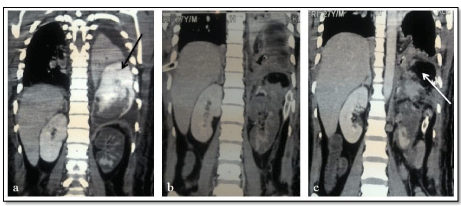
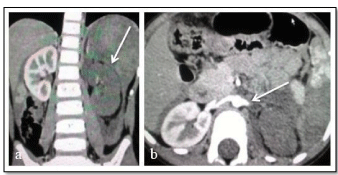
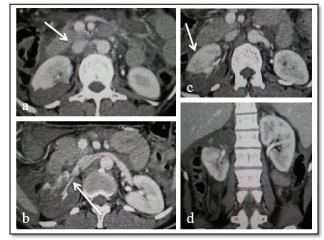
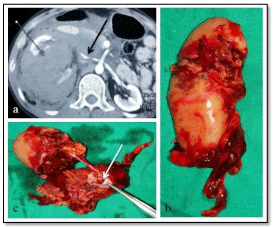
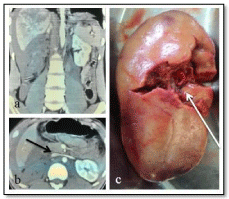

 Save to Mendeley
Save to Mendeley
